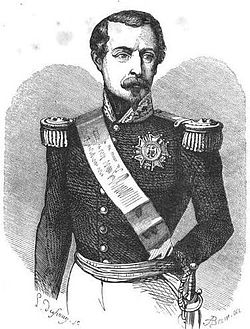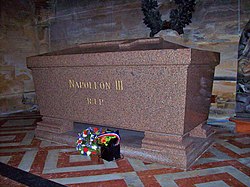Napoleon III.
Back

Image source
Wikimedia
https://en.wikipedia.org/wiki/File:Alexandre_Cabanel_002.jpg
Basic data
-
Bonaparte, Charles Louis Napoléon
-
April 20, 1808 in Paris
-
†January 9, 1873 in Chislehurst bei London
-
Paris, London
Documents
Biographical information from the WeGA
Sohn von Louis Napoléon Bonaparte und dessen Frau Hortense de Beauharnais; 1848 bis 1852 französischer Staatspräsident, 1852 bis 1870 Kaiser von Frankreich



















![Reception of the Siamese ambassadors by Napoleon III at the palace of Fontainebleau, 27 June 1861 (painting by Jean-Léon Gérôme)[101][102] (Source: Wikimedia) Reception of the Siamese ambassadors by Napoleon III at the palace of Fontainebleau, 27 June 1861 (painting by Jean-Léon Gérôme)[101][102] (Source: Wikimedia)](https://upload.wikimedia.org/wikipedia/commons/thumb/7/75/Jean-Leon_Gerome_001.JPG/250px-Jean-Leon_Gerome_001.JPG)















